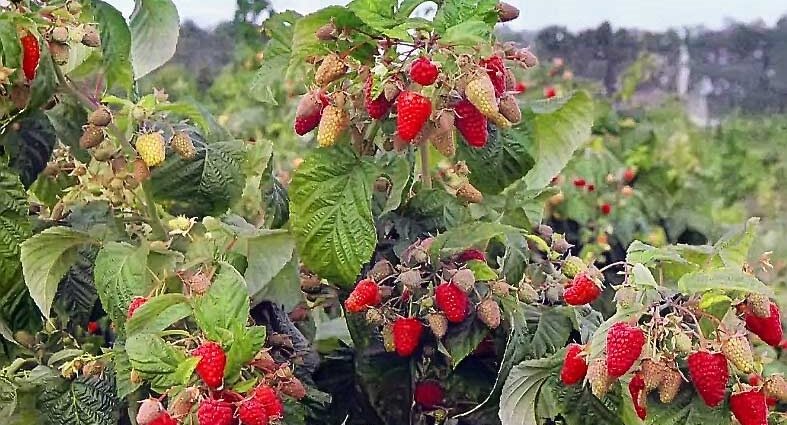Contents
Raspberry firebird, description and varieties
Raspberry “Firebird” is a remontant species that gives high yields. The berries are bright and large, with a dessert taste. The variety grows well and bears fruit in areas with favorable climatic conditions and fertile soil.
Description of the raspberry variety firebird
The plant can bear fruit 2 times a year. To get a crop twice, you need to cut off all the fruiting parts before the onset of frost. In the spring, new shoots will appear, which will bear fruit in the current season.
The Firebird raspberry has bright juicy berries
Variety characteristic:
- Slightly spreading bush with a height of 1,4-2,2 m. Fruit branches are located almost along the entire length of the shoot. Leaves are green, slightly wrinkled, of medium size. The shoots are thick with thin and soft thorns located at the bottom and in the middle of the shoot.
- Berries of uniform color, large, up to 6 g, have a cone shape. The taste is sweet with sourness, the pulp is juicy. Due to their good density, they do not become watery and soft even after rain.
- More than 2 kg of berries can be harvested from one bush. They begin to ripen in the second half of August, before the onset of frost 85-90% ripens.
The variety has an average level of resistance to heat, drought and frost, but a high resistance to disease.
How to grow the Firebird raspberry variety
Prepare the soil for planting in October. Dig a planting hole and add manure or humus there with a layer of 16-21 cm, mineral fertilizers, and sprinkle it with soil on top so that later the roots do not touch the nutrients.
In the spring, when planting seedlings, spread organic and vegetable mulch near the root zone. The plant needs a support with a height of 2-2,2 m. Pull the wire on it in several rows, the lowest one should be located at a height of 60 cm from the ground. Tie each seedling horizontally to a wire, 11-14 cm apart. Another way is to wrap each branch around a wire.
In the spring, after the snow has melted, apply a fertilizer containing potassium and nitrogen. Apply minerals before flowering
Weed the plant in time, loosen the soil and remove weeds. Raspberries require timely watering, they do not tolerate drought, and excessive moisture can also badly affect it.
Prune raspberries after harvest, in mid-fall. Trim off all annual shoots, leaving a stump of a few centimeters. This will protect the plant from parasites and viruses. Prune the bushes a second time in mid-spring, when swollen buds can separate healthy shoots from damaged ones in winter.
With the right care of raspberries, you will reap a bountiful harvest over several years. You can enjoy the berry not only fresh, but also make useful preparations from it for the winter.










